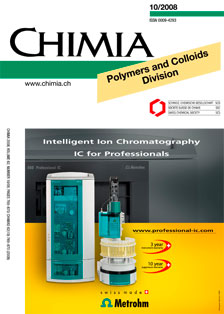Biofunctional and Biomimetic Polymer Brushes Prepared via Surface-Initiated Atom Transfer Radical Polymerization
DOI:
https://doi.org/10.2533/chimia.2008.793Keywords:
Biomaterials, Biomineralization, Polymer brushes, Protein microarrays, Surface-initiated polymerizationAbstract
Surface-initiated controlled radical polymerization is a powerful strategy to tailor the chemical and physical surface properties of materials. This article highlights recent work from the author's laboratory in which surface-initiated atom transfer radical polymerization is used to generate biofunctional and biomimetic surface coatings. Three examples will be discussed. The first two examples are based on the surface-initiated atom transfer radical polymerization of 2-hydroxyethyl methacrylate and (polyethylene glycol) methacrylate, which generates a polymer brush that suppresses non-specific adhesion of proteins and cells. These non-fouling brushes have been used to generate protein microarrays and to produce coatings that can promote endothelialization of implantable biomaterials. The third example describes the use of polyelectrolyte brushes as matrices to direct the mineralization of calcium carbonate.Downloads
Published
2008-10-29
Issue
Section
Scientific Articles
License
Copyright (c) 2008 Swiss Chemical Society

This work is licensed under a Creative Commons Attribution-NonCommercial 4.0 International License.
How to Cite
[1]
L. Lavanant, H.-A. Klok, Chimia 2008, 62, 793, DOI: 10.2533/chimia.2008.793.







